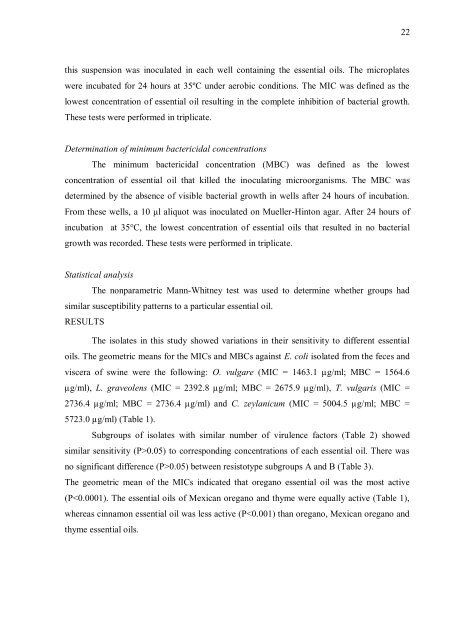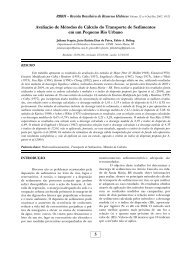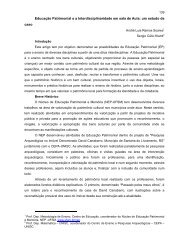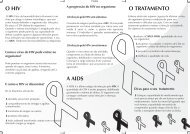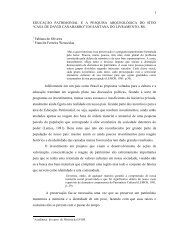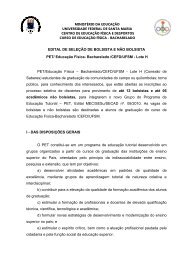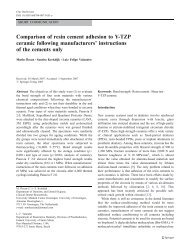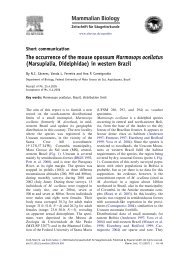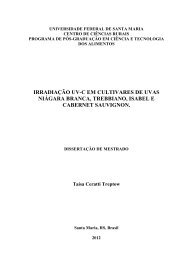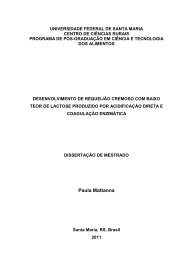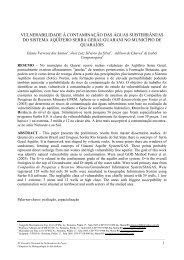ATIVIDADE ANTIMICROBIANA DE ÓLEOS ESSENCIAIS DE - UFSM
ATIVIDADE ANTIMICROBIANA DE ÓLEOS ESSENCIAIS DE - UFSM
ATIVIDADE ANTIMICROBIANA DE ÓLEOS ESSENCIAIS DE - UFSM
Create successful ePaper yourself
Turn your PDF publications into a flip-book with our unique Google optimized e-Paper software.
this suspension was inoculated in each well containing the essential oils. The microplates<br />
were incubated for 24 hours at 35ºC under aerobic conditions. The MIC was defined as the<br />
lowest concentration of essential oil resulting in the complete inhibition of bacterial growth.<br />
These tests were performed in triplicate.<br />
Determination of minimum bactericidal concentrations<br />
The minimum bactericidal concentration (MBC) was defined as the lowest<br />
concentration of essential oil that killed the inoculating microorganisms. The MBC was<br />
determined by the absence of visible bacterial growth in wells after 24 hours of incubation.<br />
From these wells, a 10 μl aliquot was inoculated on Mueller-Hinton agar. After 24 hours of<br />
incubation at 35°C, the lowest concentration of essential oils that resulted in no bacterial<br />
growth was recorded. These tests were performed in triplicate.<br />
Statistical analysis<br />
The nonparametric Mann-Whitney test was used to determine whether groups had<br />
similar susceptibility patterns to a particular essential oil.<br />
RESULTS<br />
The isolates in this study showed variations in their sensitivity to different essential<br />
oils. The geometric means for the MICs and MBCs against E. coli isolated from the feces and<br />
viscera of swine were the following: O. vulgare (MIC = 1463.1 µg/ml; MBC = 1564.6<br />
µg/ml), L. graveolens (MIC = 2392.8 µg/ml; MBC = 2675.9 µg/ml), T. vulgaris (MIC =<br />
2736.4 µg/ml; MBC = 2736.4 µg/ml) and C. zeylanicum (MIC = 5004.5 µg/ml; MBC =<br />
5723.0 µg/ml) (Table 1).<br />
Subgroups of isolates with similar number of virulence factors (Table 2) showed<br />
similar sensitivity (P>0.05) to corresponding concentrations of each essential oil. There was<br />
no significant difference (P>0.05) between resistotype subgroups A and B (Table 3).<br />
The geometric mean of the MICs indicated that oregano essential oil was the most active<br />
(P


